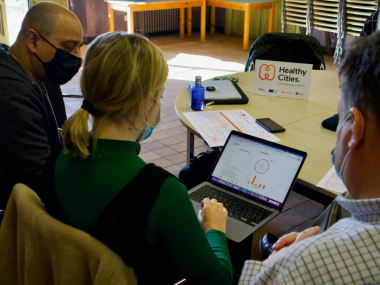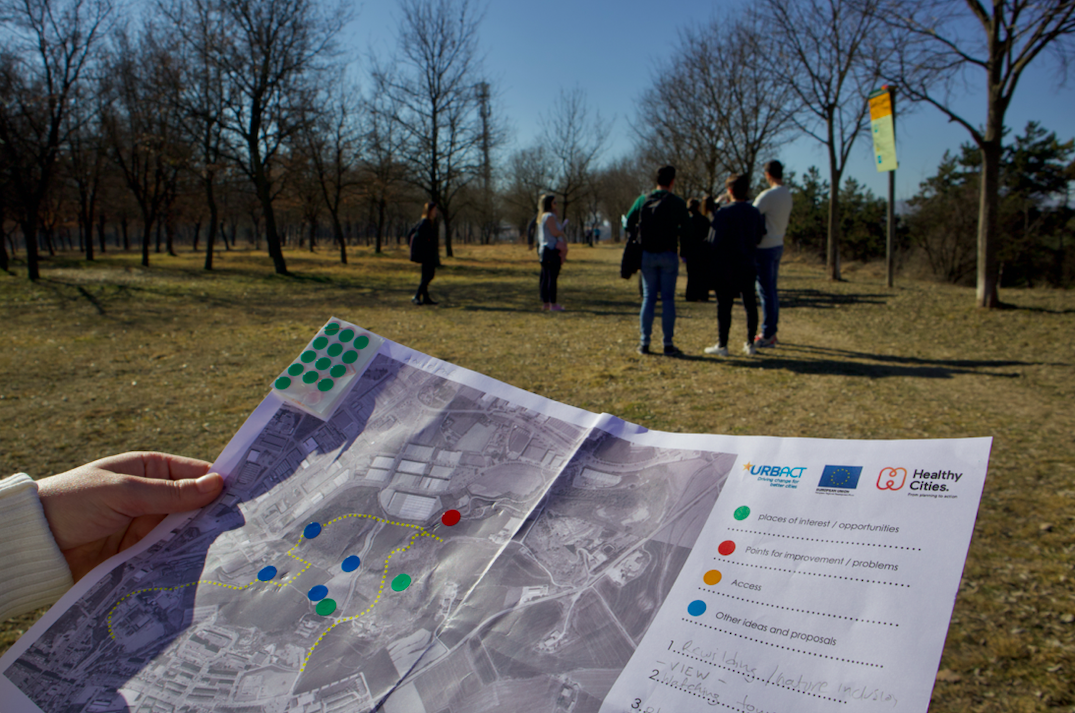Health and Urban Planning: Visualising Impact with the Healthy Cities Generator
Edited on
11 March 2022By: Ad-hoc Expert Sofia Aivalioti
What does a holistic approach to health look like? Often, people’s replies will cover medical care, diet, and exercise - but as urban populations continue to accelerate, urban planning is increasingly recognised as a pillar of holistic health.

A Workable Approach to Generate Health
To connect the dots between health and urban planning, professionals need tools to help them visualise the impact of their plans and see how small adjustments could make a big difference to the lives of local people. The Healthy Cities Generator (HCG) is a hands-on, practical planning tool designed to give actionable indicators for anyone looking to integrate health into planning. The HCG is an outcome of the Healthy Cities Action Planning Network and is an innovative contribution to the traditional Health Impact Assessment (HIA) approach.
There is overwhelming scientific evidence showing how urban design affects health. Despite this, health and planning are too rarely considered in tandem. The HCG aims to bridge the gap between ´what we know´ and ´what we do´ by making it easy for urban planners and policy makers to incorporate health factors into urban planning and urban factors into health policy.
We need to make the process simple, while integrating all aspects of health into all stages of planning. In the sea of tools that are either limited in depth and scope or significantly complex, the HCG lands in the middle - a comprehensive approach considering many indicators, but lacking jargon and easy to use by citizens and planners alike.
As a tool with two entry points of health and planning, the HCG is useful for both creating a plan based on desired health outcomes and evaluating a proposed plan. The UN Habitat’s Sourcebook for health in urban planning states the importance of a tool with two entry points, but has yet to add one to their repertoire. Thus, the HCG would fill this and a number of other gaps in the Sourcebook.
Based on a systematic review of scientific peer-reviewed publications linking urban determinants and their impact on health, the HCG automatically calculates the health impact of urban planning actions. Combining these science driven insights with a lean, easy to use interactive interface, the tool provides unique support to decision makers, planners and health professionals.
The Healthy Cities Generator in Practice
Through the Healthy Cities Network, 9 European cities are successfully applying the prototype to evaluate their action plans for urban design.

In a recent City-2-City meeting in Vic, the Healthy Cities team put the HCG to work. On the first day of the meeting, our group went to visit the Puig dels Jeus green space that Vic is aiming to improve. With a map of the area, participants used coloured stickers to indicate the nicest points, the points to improve, and the points of opportunity along the route. Later, we hosted a roundtable discussion on the main issues identified during the morning site visit.
These included:
- An educational area as an outdoor classroom
- Zoning the park with a more quiet area for biodiversity and active parts for physical activity and leisure
- Think of use needs during different times of day and seasons
- Consider accessibility and connection with surrounding buildings/factories, as well as plants and paintings to create a buffer between the city and the green space
- Art inclusion: wood/stone carvings with biodiversity themes
The following day, we brought out the HCG to discuss its functionalities and potentials, using our site visit as inspiration. We analysed the new proposals to the Vic plan to see its impact on health indicators as well as possible proposals to improve its impact on physical, mental and environmental health, pushing for a higher score.

Another successful example is that of Malta. Their team used the HCG approach to their proposed actions for Senglea, the historic coastal city. They applied the tool individually to each action, resulting in a pictorial output in the form of graphs. The final results in both instances show that the top scorer in impact is Physical Activity. This confirms their initial plan to encourage more active lifestyles in the city of Senglea.
For Malta, the proposed actions and corresponding activities are aimed at encouraging more active and healthier lifestyles by providing opportunities for physical activity and improving the public realm (each is dependent on the other for greater success). Therefore, the HCG tool has confirmed that the actions proposed will, in principle, lead towards creating a more suitable environment to promote more active lifestyles.

Helping cities generate health and introducing our health impact approach has attracted keen interest from a number of cities. The HCG holds much potential to scale up and serve urban planners across regions. If you are interested in learning more, co-developing, testing, or using the tool, check out the HCG website and get in touch!
Submitted by Caitlin Ball on
